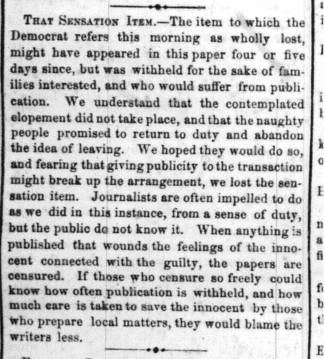There has been some discussion among some of my writing pals this week about the protests in Egypt and journalists, how reporters insert themselves into stories and where the line is between reporting and making the news. Case in point: NBC’s Lester Holt and his camera crew trying to battle an unruly crowd in Egypt to make their way to the apartment of 76 year old Mary Thornberry and save her from certain doom.
It’s not just reporters trying to make news. Another thing that I’ve also noticed is that in the attempt to get the news out before anyone else, online writing has gotten bad. Really bad.
I’m not talking about casual bloggers. I’m taking reporters for actual news organizations who seem to forget that online writing is still writing. Take this story from 13 WHAm TV:
Rochester, N.Y.–Children Awaiting Parents is a locally based non-profit trying to find homes for older children in need of families.
This past Wednesday, the group received a big boost from Hollywood.
Roughly 200 celebrities such as Hilary Swank held raise funds for adoption.
“We’re a national organization. We’ve been talking about this for 38 years, but to have someone
like Hilary Swank and Leigh Anne Tuohy host this event for us, it made all the difference. People are talking about it and that’s the key,” said CAP Executive Director Mark Soule.
Tuohy and her family adopted an African American teenager named Michael Oher and became the inspiration for
the Michael Lewis book, and later movie called “The Blind Side.”
Roughly $10,000 was raised at Wednesday’s gala according to Soule.
That’s the actual story, typos, paragraphs and all, just so you don’t think I’m eliminating anything. What event? Where was it? How did Hillary Swank become connected to Children Awaiting Parents? Who else was there?
And what about proofing? I know I was in college a million years ago, but after “Children Awaiting Parents” shouldn’t there be (CAP) so that when it’s referenced that way later readers understand? And there’s a quirky typo an edior should have caught: “Hilary Swank held raise funds for adoption”.
Understand that I’m not knocking the reporter. He’s actually a great reporter. And I’m notorious for leaving out words and paragraphs when I write. That’s why I have an editor for my paid writing. On this blog? It’s just me and the cat on the keyboard. If I haven’t had enough tea, I might make the same mistakes.
But we’re not talking about some blogger in her pajamas. This is an actual, legitimate news outlet, one of the top in Rochester, one that in another story said about an accident: “It happened around 8:30 p.m. Firday”.
Firday? I forget. Does that come after Thrusday?
The problem is that news outlets are in such a hurry to get the news out there that they forget about details, clarity, editing, as if the facts matter less than the speed with which those facts go out around the world.
Or in Lester Holt’s case, making sure the cameras are there to record his journalistic heroics – or not.

